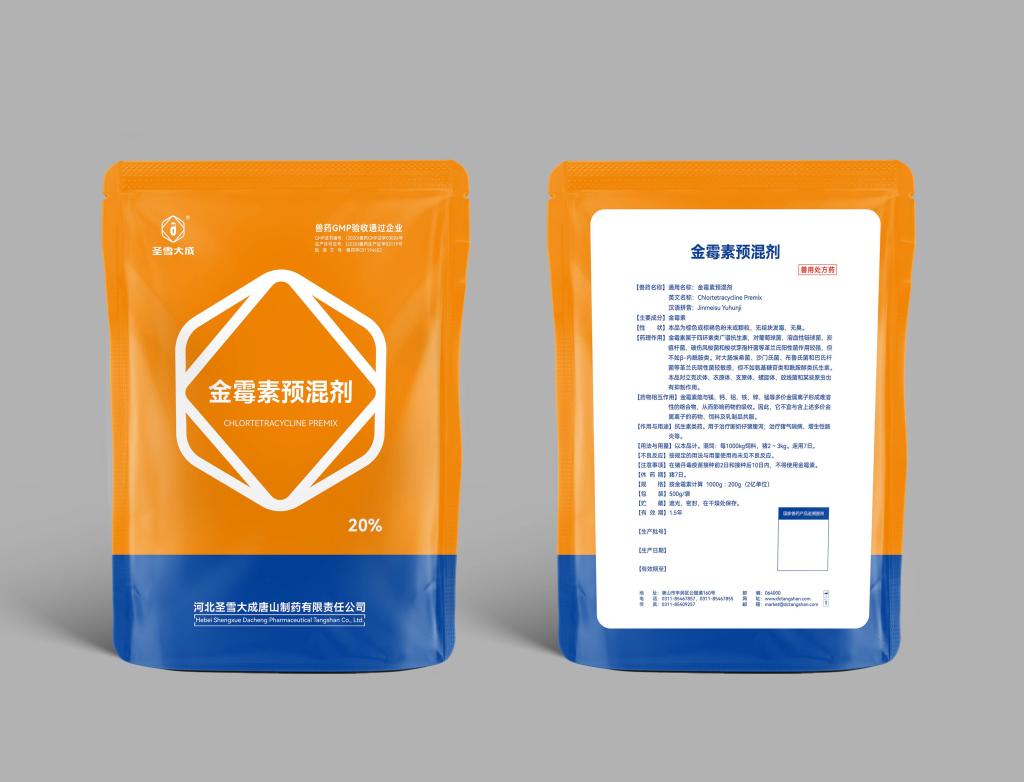Tel:+8618231198596

News
 CONTACT
CONTACT
 CONTACT
CONTACT
- Linkman:Linda Yao
- Tel: +8618231198596
- Email:linda.yao@dcpharma.cn
- Linkman:CHARLES.WANG
- Department:Overseas
- Tel: 0086 0311-85537378 0086 0311-85539701
News
Current Position:
Home >
News
>The role of Chlortetracycline Premix in reducing veterinary treatment costs.
The role of Chlortetracycline Premix in reducing veterinary treatment costs.
TIME:2024-06-04
Effectiveness in Disease Prevention
Chlortetracycline premix is widely recognized for its effectiveness in preventing and controlling bacterial diseases in livestock, including respiratory infections, enteric diseases, and reproductive disorders. By administering chlortetracycline prophylactically through feed or water, farmers can reduce the incidence and severity of infectious diseases, thereby minimizing the need for therapeutic interventions and veterinary treatments. This proactive approach not only improves animal health and welfare but also mitigates the economic losses associated with disease outbreaks.
Impact on Animal Health and Productivity
The use of chlortetracycline premix has significant implications for animal health and productivity in livestock farming. By preventing and controlling infectious diseases, chlortetracycline helps maintain optimal growth rates, feed efficiency, and reproductive performance in livestock populations. Healthy animals are more resilient to stressors and environmental challenges, leading to improved overall productivity and profitability for farmers. Additionally, the reduced prevalence of disease improves the quality of animal products, enhancing their market value and consumer appeal.
Reduction of Veterinary Treatment Costs
One of the primary economic benefits of chlortetracycline premix is its role in reducing veterinary treatment costs in livestock farming. By preventing disease outbreaks and minimizing the need for therapeutic interventions, chlortetracycline premix helps farmers avoid expenses associated with veterinary consultations, diagnostics, and medications. Moreover, proactive disease prevention measures contribute to lower mortality rates, reduced treatment failures, and improved herd health status, further reducing veterinary costs over time.
Improved Feed Efficiency and Growth Performance
Chlortetracycline premix has been shown to enhance feed efficiency and growth performance in livestock, resulting in improved economic returns for farmers. By controlling subclinical infections and optimizing nutrient utilization, chlortetracycline promotes efficient feed conversion and growth rates, leading to higher carcass yields and marketable weights. This translates into increased revenue and profitability for livestock producers, offsetting the initial investment in antibiotic supplementation.
Considerations for Responsible Use
While chlortetracycline premix offers economic benefits for livestock farmers, responsible use practices are essential to mitigate the risk of antimicrobial resistance and safeguard animal and public health. Farmers should adhere to recommended dosage regimens, withdrawal periods, and veterinary oversight when using chlortetracycline premix. Additionally, efforts to implement alternative disease prevention strategies, such as vaccination, biosecurity measures, and improved management practices, can help reduce reliance on antibiotics and minimize the development of resistance.
Economic Considerations for Farmers
When evaluating the economic viability of chlortetracycline premix supplementation, farmers should consider factors such as feed costs, labor expenses, market prices for livestock products, and potential regulatory constraints. Cost-benefit analyses can help assess the return on investment associated with chlortetracycline premix use and inform decision-making regarding its incorporation into veterinary management protocols. Moreover, farmers should prioritize sustainable practices that balance economic considerations with environmental and societal impacts.
Conclusion
Chlortetracycline premix plays a crucial role in reducing veterinary treatment costs and improving profitability in livestock farming. Its effectiveness in disease prevention, impact on animal health and productivity, and economic benefits for farmers underscore its importance as a valuable tool for optimizing veterinary management practices and enhancing financial outcomes in animal agriculture. Responsible use of chlortetracycline premix, in alignment with best management practices and regulatory guidelines, is essential to ensure its continued effectiveness and sustainability in the livestock industry. By integrating chlortetracycline premix into comprehensive herd health programs, farmers can achieve better economic returns and contribute to the long-term viability of their operations.
- Tel:+8618231198596
- Whatsapp:18231198596
- Chat With Skype







